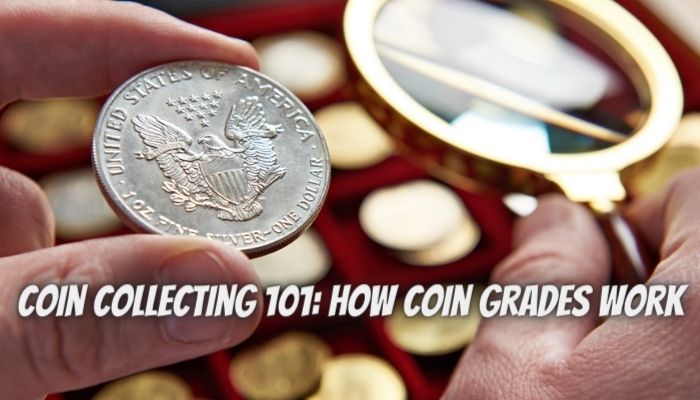People of various ages and socioeconomic levels have enjoyed the intriguing pastime of coin collecting. Coin grading, which is the act of identifying the grade and condition of a coin, is a crucial component of coin collecting. Coin grades are rated on a scale of 1 to 70, with one being the most severely worn or damaged and 70 being the new, uncirculated coin. Any coin collector must be aware of how coin grading operates. In this article, we’re going to tell you exactly how coin grading works.
Coin Grading Using the Sheldon Scale
The Sheldon Scale, created by Dr. William Sheldon in the 1940s, is the most used coin grading method. The Sheldon Scale grades coins using a numerical method, with the number representing the coin’s general condition. A coin graded as VG-8 is a perfect coin with some signs of wear and tear, whereas a coin graded as MS-70 is a flawless, uncirculated piece. The MS designation, “Mint State,” shows that the currency has never been used in commerce. The number indicates the coin’s grade after the MS.
Factors That Determine the Value of a Coin
Coin grading is crucial since it determines a coin’s worth and rarity. Those that are in better shape are often worth more than coins that are damaged. This is because coins with a lengthy history of use are more likely to display signs of wear and tear, which can lower their value. On the other hand, flawless, uncirculated coins are uncommon and highly prized by collectors.
The Coin’s Luster and Strike
A professional coin grader should use several tools and methods to assess the quality of the coin. The coin’s brilliance, strike, and surface quality should all be examined, along with any evidence of wear or damage. The term “luster” describes the sheen or gloss of a coin’s surface.
A coin with good luster will have a brilliant and lustrous surface. The term “strike” describes how angular the coin’s design is. A coin with a high strike will have precise and distinct details. Any scuffs, scratches or other flaws on the coin’s surface determines its surface quality. Good surface quality coins will have few blemishes or scratches.
The Coin’s Wear and Corrosion
A qualified coin grader will also examine the coin for wear or corrosion. Long-circulated coins are prone to show more significant signs of wear and tear, which might lower their value. A coin will also score lower if it has been cleaned or altered in any way.
To ensure that coin grades are evaluated precisely and consistently, coin collectors use teams of experienced coin graders that adhere to strict grading criteria. A coin will be sealed in a plastic holder with a label stating its grade after being graded by one of the grading agencies. The coin is protected by this “slab” holder, making it simple for the collector to see its condition.
Summary
A crucial component of coin collecting is coin grading. Collectors can choose which coins to add to their collection with more knowledge about coin grades and the elements that affect a coin’s grade. To maintain the coins’ worth and rarity, professional coin grading agencies are crucial in guaranteeing that coins are graded precisely and consistently. Understanding the value of coin grading and utilizing it to guide your decisions is crucial for coin collectors.
Related posts :




